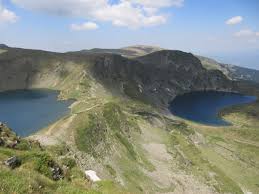In Bulgaria, history meets beautiful landscapes

Joshua Berida
Sofia: Relative to other countries in Europe, Bulgaria is quite an affordable destination and can serve as a hub for exploring the rest of the Balkans
I didn’t know much about Bulgaria or the countries in Southeastern Europe. However, as I visited more and more countries, my curiosity to see more places (even those outside the radar of most Filipinos) rose.
The feeling of waking up in a new city is still exciting even after all these years since my first international trip as an adult. I made sure I passed through Bulgaria before I ended my trip around Europe.
Sofia has a long and interesting history that dates to the 8th century BC. Its beginnings were a settlement the Thracian established.
The Romans later conquered the community and named it Serdica. As the centuries went on, Bulgarian identity and consciousness formed with influences from the Russians, Ottomans, Byzantium, Romans, and the Soviet Union.
I took long walks around the city (with the occasional metro ride) to soak it all in. I was so used to the hustle and bustle of big cities in Asia (born and raised in Quezon City here), so Sofia’s laidback energy was a welcome surprise despite it being the capital of Bulgaria.
The most prominent piece of architecture and building in the city is the St. Alexander Nevsky Cathedral. Its picture will most likely appear in your search engine results page when you do a quick search of Sofia, Bulgaria.
The Bulgarians had the massive cathedral built to honor the Russians, Ukrainians, Romanians, Finnish, and Moldavians that helped liberate Bulgaria from the Ottomans in the late 19th century.
Bosnia and Herzegovina may not be a common European adventure stop, but the mix of shared cultures and histories make it a unique destination
If you’re a history buff, you’ll love exploring Türkiye’s Selçuk and İzmir, home to some of the world’s ancient ruins, all with an eclectic mix of Christian, Roman, Greek, and Islamic influence
These seven churches worthy of this year’s Visita Iglesia are silent witnesses to the province’s religious and historical growth
Construction of the church began in the 1880s. Its sanctification took place in the 1920s. Its monumental size and domes make it an attention-grabbing cathedral. Its cavernous interior is just as beautiful as its exterior with its chandeliers and detailed religious art and icons. I spent around an hour inside the cathedral before moving on.
Sofia has ancient roots that make it a remarkable city to visit. Empires and governments have risen and fallen throughout the city’s history. The Serdica Archaeological Complex provides a glimpse into one of the city’s old iterations as a Roman city.
I saw vestiges of walls, streets, and houses, some of which are right next to a metro station. The Church of St. George is a relic of the past within Serdica’s walls. It used to be a Roman bath before it became a church over the centuries.





